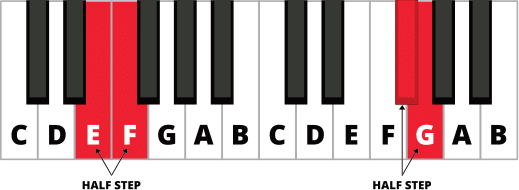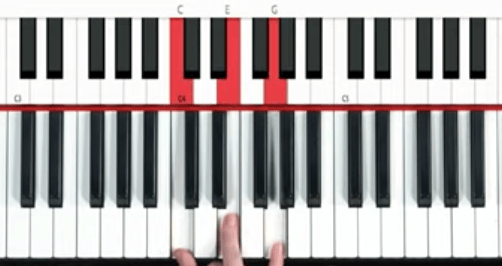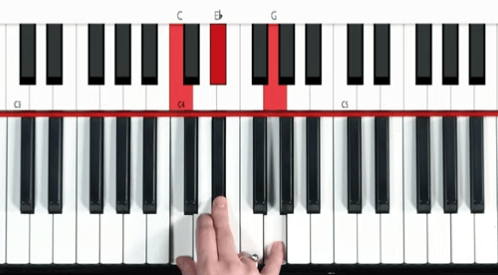Chords are the backbone of songs, but they can be confusing.
What’s the difference between major and minor chords? How do you know which one to use?
This lesson will show you how to form a major and minor chord on ANY key on the piano, and how to train your ear so that you can hear the difference and be able to identify the chords.
In order to learn the difference between major and minor chords, we’ll need to look at how they are built. The easiest way I find to build chords is to start with the outer shell — the root and the 5th.
The root is the note that the chord is built from. For example, a C chord is built from a C note. A B chord is built from a B note. The 5th is the note that is 5 scale tones up from the root note.
To find the 5th, count up 7 half steps. You can do this on any key.


Understanding how chords work will give you a BIG leg up in learning how to play the piano. Knowing just a handful of chords will unlock hundreds, if not thousands of pop songs. To get started today, check out our free Chord Hacks course, or read How to Play Piano Chords.
Now you have the outer shell it’s time to add the middle note. This is the note that will determine whether the chord is major or minor. The outer shell will always be the same.
To make a major chord you add a major third. This means adding the third note of the major scale. You can find that by counting up 4 half steps from the root note.
In C major, it looks like this:

To make a minor chord you add a minor third. You can do this by counting up 3 half steps from the root note. So now the C major chord has become a C minor chord, and it looks like this:

Try playing both of those. Hear the difference?
For a more complete lesson on the chord formula, click here.
Now you know how to build a chord, try playing major AND minor chords all over the piano. Pick a note, play a major chord and then play a minor chord immediately after.
It’s VERY obvious that they are different and it will help you get used to the sound.
This is important to do because it can often be difficult to hear the differences when the chords are used in a song or progression. By playing both major and minor versions you’ll get better at hearing the differences and identifying chords.
Let’s face it — playing major and minor chords around the piano is going to get real boring real quick.
So, instead of playing the chords together try playing them as broken chords. That just means playing the individual notes one at a time. You’ll find it’s much more musical and creative.
You might even come up with some fantastic improvisation!
Knowing the basics of major and minor chords will give you a fantastic foundation to build from, and opens the door to exploring more complex and complicated chords.
Have fun!
Lisa Witt has been teaching piano for more than 20 years and in that time has helped hundreds of students learn to play the songs they love. Lisa received classical piano training through the Royal Conservatory of Music, but she has since embraced popular music and playing by ear in order to accompany herself and others. Learn more about Lisa.
/marketing/pianote/promos/april/banner-bg-m.webp)
We use cookies for traffic data and advertising. Cookie Policy »
/marketing/pianote/promos/april/banner-title.webp)